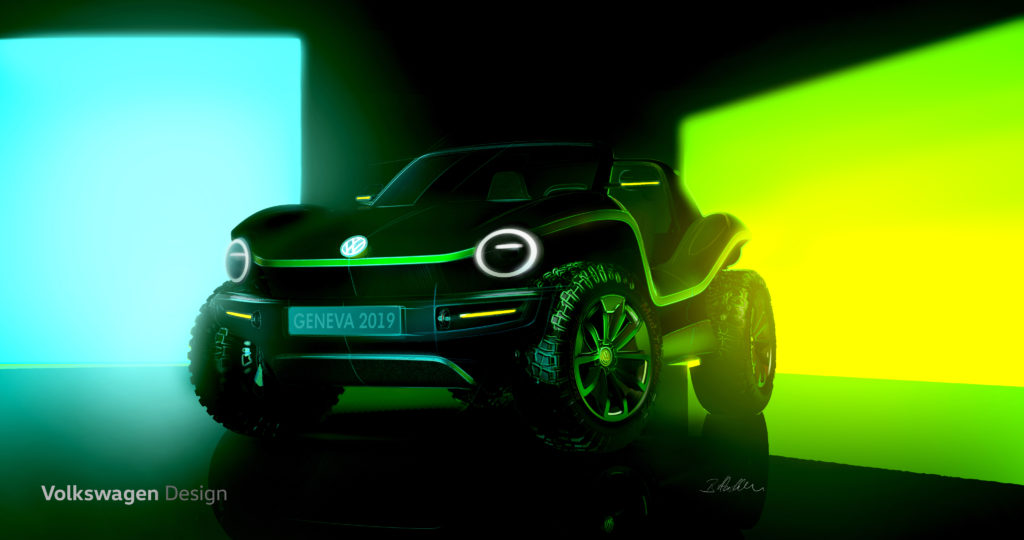Given the high cost and complexity of developing new vehicles, mass market automakers tend to stick to models with broad appeal while shying away from particularly distinctive or offbeat designs. But Volkswagen’s Modular Electric Drive Matrix (MEB), the central element in the company’s electric vehicle future, will help Volkswagen deliver a wide array of vehicles customized for particular regions and purposes, in addition to offering global efficiencies for all models by using a single cost-effective platform.
To illustrate this efficiency and flexibility, and show that the MEB platform can be used for more than just large-scale series production models, Volkswagen at next month’s International Geneva Motor Show will unveil an MEB-based fully electric dune buggy.
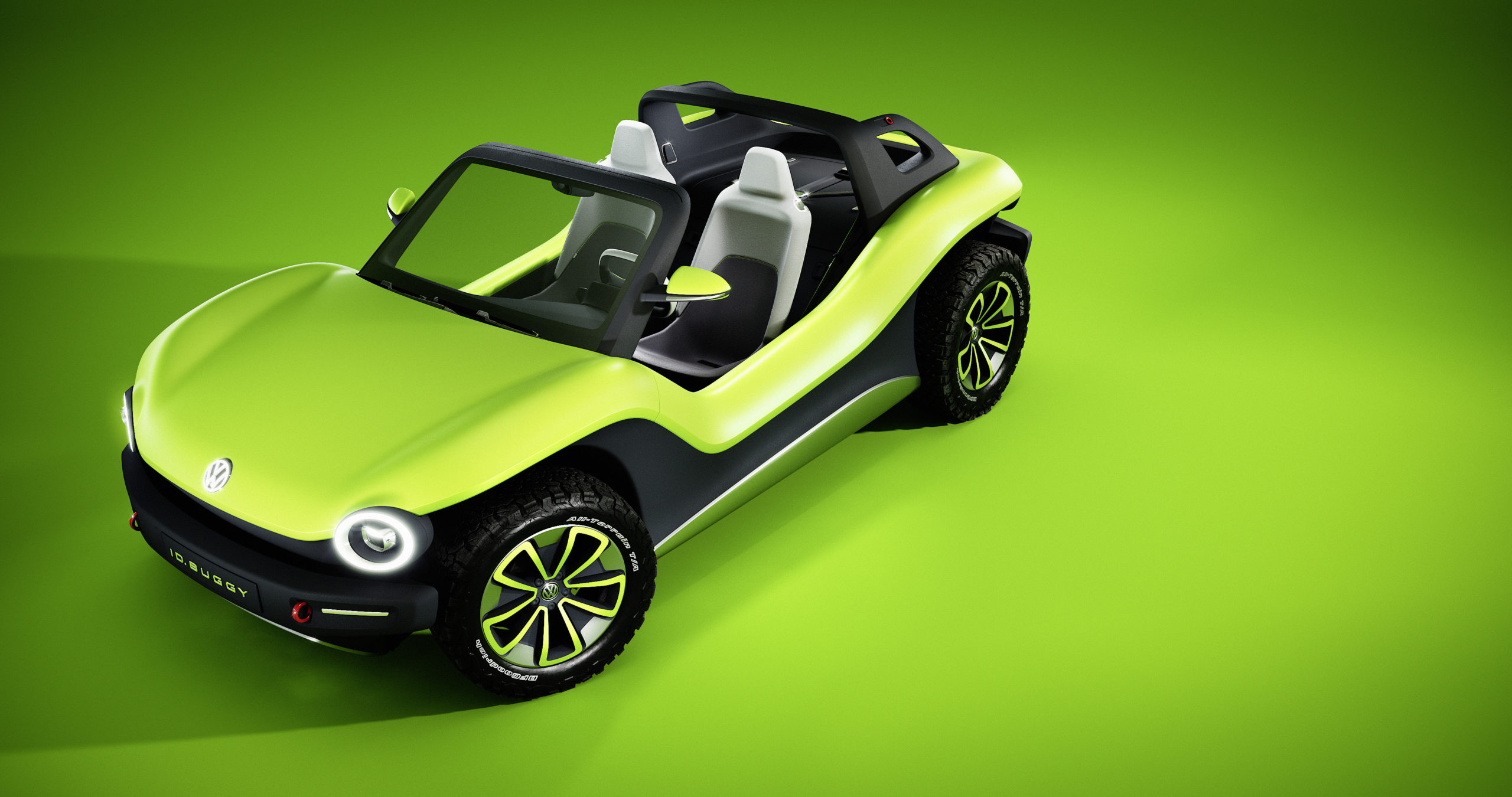
Why did Volkswagen choose a dune buggy? Says Klaus Bischoff, Head Designer at Volkswagen, “A buggy is more than a car. It is vibrancy and energy on four wheels. These attributes are embodied by the new e-buggy, which demonstrates how a modern, non-retro interpretation of a classic can look and, more than anything else, the emotional bond that electric mobility can create.”
MEB: The Heart of Volkswagen’s Electric Vehicle Strategy
According to a recent report in Automotive News, Volkswagen’s electrification seeds were planted at a crisis meeting arising out of the company’s emissions cheating scandal. Held in Wolfsburg on October 10, 2015, then-VW brand chief Herbert Diess convened nine top managers on a Saturday to discuss the way forward in the aftermath of the scandal that cost the company more than €27 billion in fines.
“It was an intense discussion, so was the realization that this could be an opportunity, if we jump far enough,” said Juergen Stackmann, VW brand’s board member for sales. “It was an initial planning session to do more than just play with the idea of electric cars,” he told Reuters. “We asked ourselves ‘What is our vision for the future of the brand? Everything that you see today is connected to this.'”
Just three days after the emergency meeting of the VW brand’s management board, Volkswagen announced plans to develop an electric vehicle platform, codenamed MEB, paving the way for mass production of an affordable electric car.
Fast-forward a few years, and the MEB is firmly positioned to make the manufacture of electric vehicles more efficient — i.e., less expensive — in the long term. The MEB will allow Volkswagen to produce electric vehicles with a more systematic focus and to cater to increasing demand for electric vehicles. The MEB also ensures vehicles using the platform are optimally equipped for EV-specific requirements by taking into account what axles, drive units, wheelbases, and weight ratios need to look like. It also considers the best design and position for the batteries.
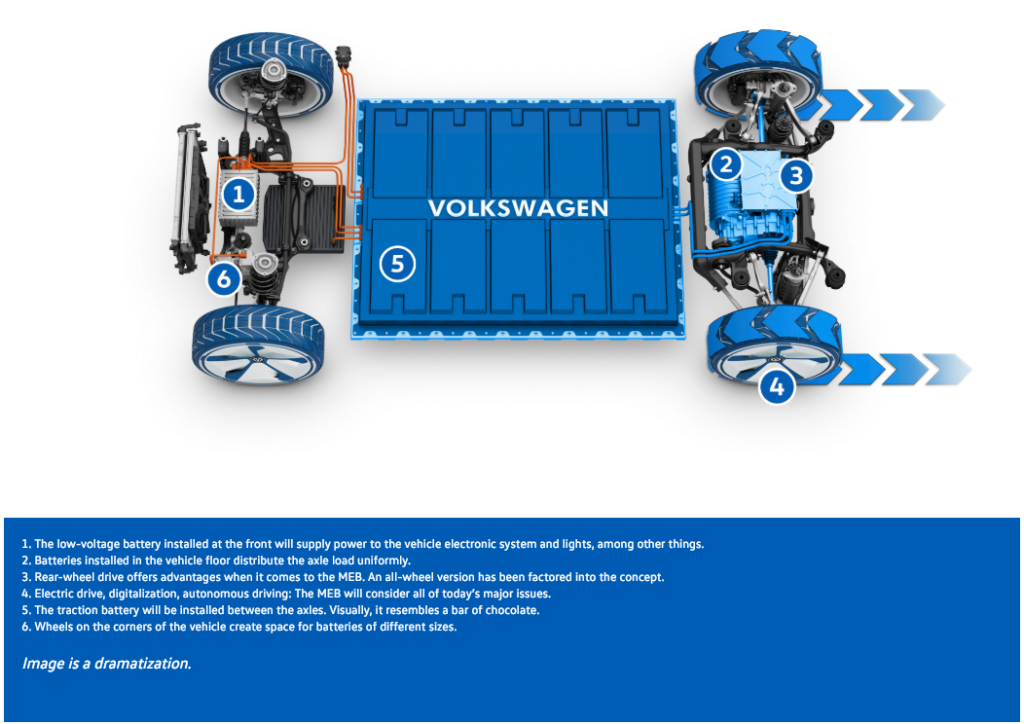
The Plan: Transform 2025+
Streamlining vehicle architecture is key to the electrification aspect of Volkswagen’s Transform 2025+ plan. A big part of Transform 2025+ is an electric offensive aimed at making the company a global market leader and be the world’s first manufacturer to sell more than 1 million pure electric vehicles.
To that end, Volkswagen is investing €30 billion in electrification (in addition to tens of millions of euros in battery technology) and plans to have about 20 fully electric vehicles by 2025 with annual production of 3 million units. The company anticipates sales of 100,000 units during the first full production year, in part by deploying MEB at eight sites on three continents by 2022.
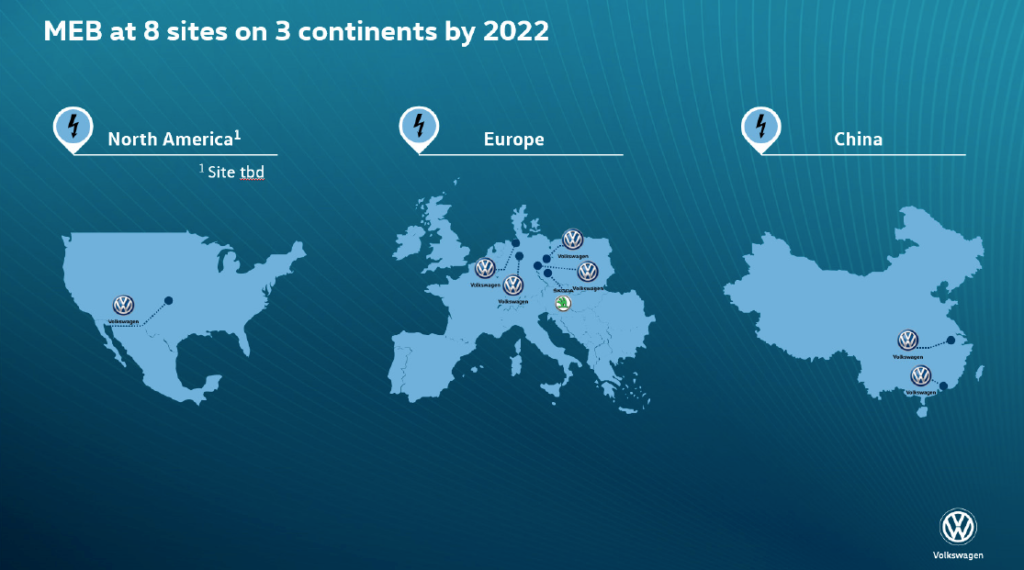
Volkswagen is currently converting its Zwickau plant to be run as an e-mobility site, and the company announced that Emden and Volkswagen Commercial Vehicles in Hanover will switch to the production of electric vehicles in 2022. Collectively, these three sites will become Europe’s largest e-production network. Two EV plants are also taking shape in Anting and Foshan in China, with MEB scheduled for 2020. For North America, VW announced at the Detroit Auto Show that it will invest $800 million to construct a second assembly plant dedicated to EVs in Chattanooga, Tennessee.
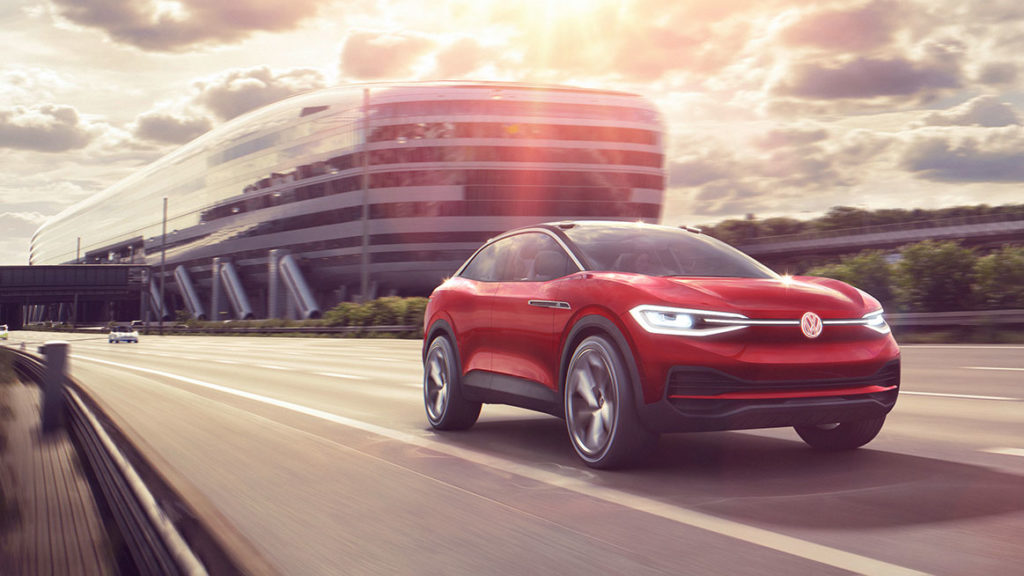
Conclusion
For more information about electric vehicles and electric vehicle charging, including tips on what you can do to make your property and community EV-friendly, please contact me. I also invite you to subscribe to receive future posts via email, view my other posts, and follow me on Twitter.

